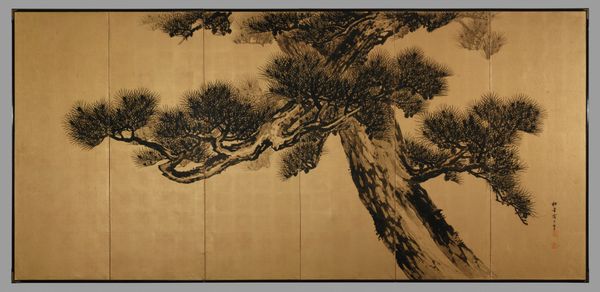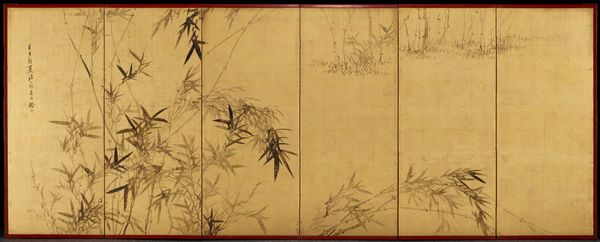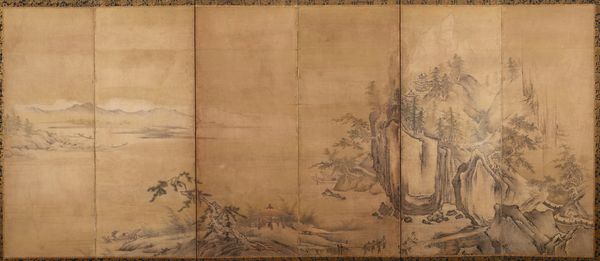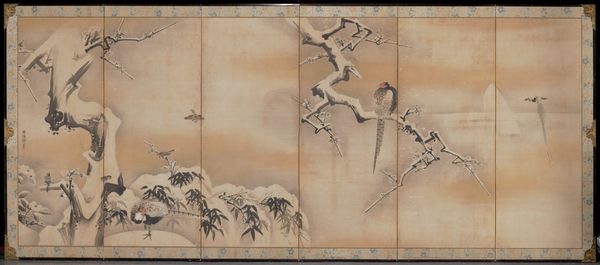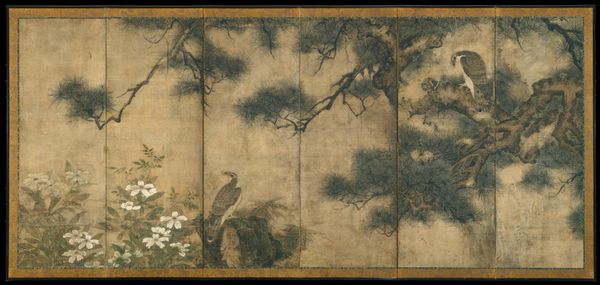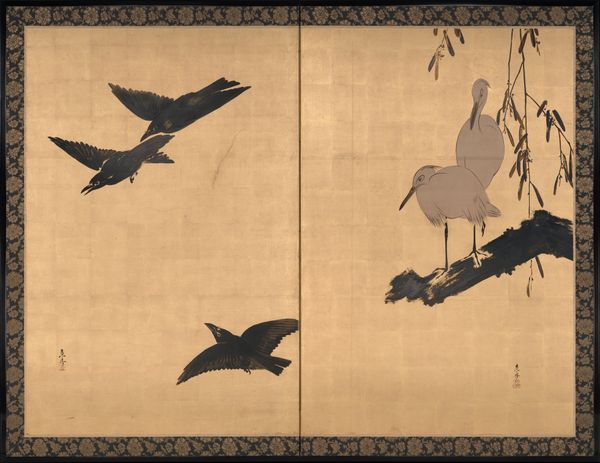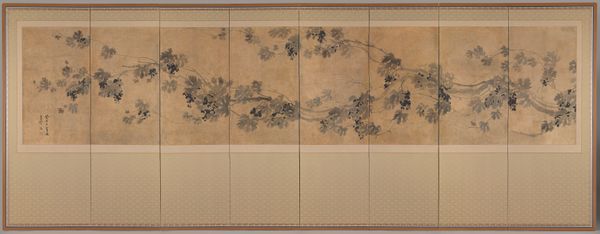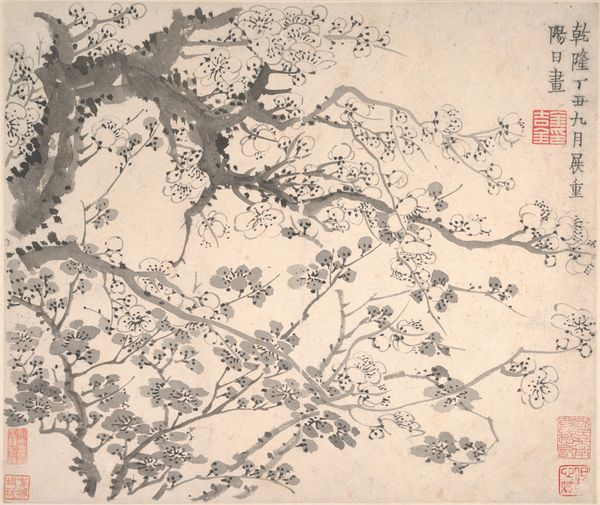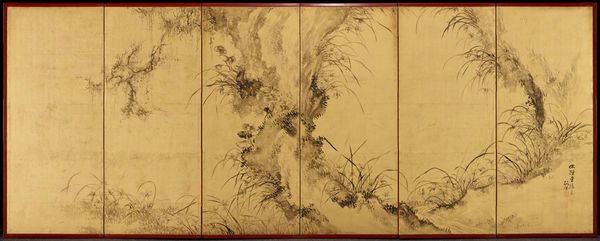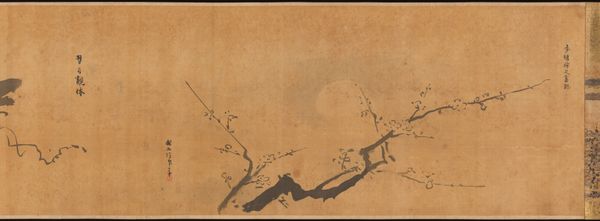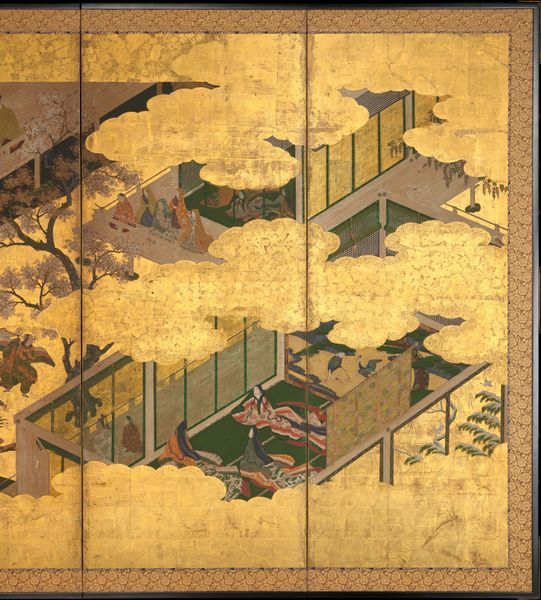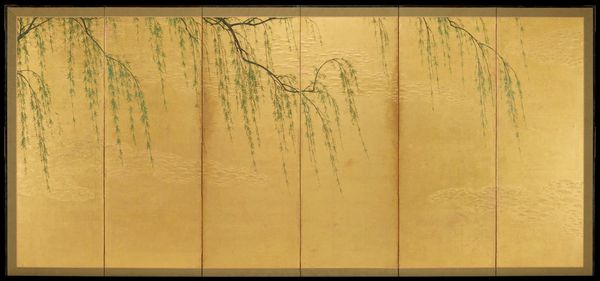![Spring [right of a pair of Birds and Flowers in Spring and Autumn] by Shibata Zeshin](/_next/image?url=https%3A%2F%2Fd2w8kbdekdi1gv.cloudfront.net%2FeyJidWNrZXQiOiAiYXJ0ZXJhLWltYWdlcy1idWNrZXQiLCAia2V5IjogImFydHdvcmtzL2NmNTM3MzEwLTA4ODMtNDMyOC04YjY4LTA3NGZhOWE5NzBlMi9jZjUzNzMxMC0wODgzLTQzMjgtOGI2OC0wNzRmYTlhOTcwZTJfZnVsbC5qcGciLCAiZWRpdHMiOiB7InJlc2l6ZSI6IHsid2lkdGgiOiAxOTIwLCAiaGVpZ2h0IjogMTkyMCwgImZpdCI6ICJpbnNpZGUifX19&w=3840&q=75)
Spring [right of a pair of Birds and Flowers in Spring and Autumn] c. 19th century
0:00
0:00
painting, watercolor
#
water colours
#
painting
#
asian-art
#
landscape
#
ukiyo-e
#
japan
#
watercolor
#
watercolor
#
realism
Dimensions: 69 x 23 in. (175.3 x 58.4 cm) (each panel )
Copyright: Public Domain
Curator: Well, hello there! This artwork is entitled "Spring," specifically the right panel of a pair called "Birds and Flowers in Spring and Autumn." Painted around the 19th century by Shibata Zeshin, this piece employs watercolor on paper, and it's now housed here at the Minneapolis Institute of Art. Editor: You know, looking at it, I feel this incredible sense of anticipation. It's so simple, really, just a golden wash, a skeletal tree… but there's life here, subtly pushing through. Curator: Exactly! Zeshin was a master of subtly embedding symbolic meaning. He painted in the wake of the Meiji Restoration, a time when Japan rapidly modernized and moved away from feudal traditions. These bird-and-flower paintings, known as kacho-ga, were incredibly popular and linked to the earlier Ukiyo-e tradition. Editor: Kacho-ga... okay, Ukiyo-e I've heard of, the "pictures of the floating world," with all those woodblock prints. But there's a stillness here I don't usually associate with that movement. What I get, even, is this odd sort of precarity - like this tree could fall! It's stark and… yeah… a little haunting. Curator: Interesting you say haunting. Perhaps you're sensing the weight of that transition, that loss. The composition also subverts certain traditional expectations. While rooted in Japanese aesthetics, it acknowledges a shifting world. Consider that in shodo traditions, blank space and asymmetry were strategically designed to encourage contemplation; you find the tree, and other landscape elements are purposely unbalanced, causing viewers to ask themselves why it's asymmetrical, to see beauty even there. Editor: Okay, I can buy that! It IS growing on me. It also strikes me that, against all the odds, life, or the *potential* of life, dominates the golden field. Curator: I’m glad you see the hope there. In that light, the blossoming bush takes on a whole new meaning. Editor: I feel like I should meditate upon golden fields more often, you know? A bit of visual haiku in the middle of the day—thanks for sharing this with me! Curator: And thank you for offering a way to approach this with a fresh pair of eyes; it is far too easy to allow assumptions to take over. Let’s do this again sometime.
Comments
No comments
Be the first to comment and join the conversation on the ultimate creative platform.
